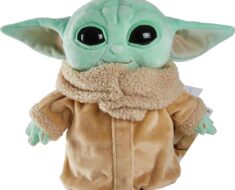Hatchimals are one of the most popular and innovative toys of the 21st century. They are mini-figures that feature an egg, in which you press your finger on the heart of the egg to “hatch” the animal or fairy inside. The toy was introduced in 2016 by Spin Master, a Canadian toy company, and quickly became a sensation, selling out in stores and online, and sparking a frenzy among parents and children alike. But how did Hatchimals come to be, and what makes them so appealing? Here is the story of Hatchimals, from their conception to their future.
The Birth of an Idea
The idea for Hatchimals was born in 2014, when David McDonald, a toy inventor and engineer, envisioned a concept for a toy that could “unbox” itself. He was inspired by the popularity of unboxing videos on YouTube, where people film themselves opening packages and revealing the contents. He thought it would be more exciting if the toy itself could do the unboxing, and create a surprise and a connection with the child. He pitched his idea to Spin Master, a company known for its innovative and interactive toys, such as Air Hogs, Bakugan, and Zoomer. Spin Master liked the idea and decided to develop it further.
The Challenge of Hatching
The idea of a toy that could hatch itself from an egg was not easy to execute. It required a lot of engineering, design, and testing to make it work. McDonald and his team had to figure out a mechanism for the hatching, a material for the egg, and a way to make the toy interactive and responsive. They also had to decide what kind of animal or creature would hatch from the egg, and how it would look and behave. They experimented with different prototypes, such as a dinosaur, a dragon, and a penguin, and settled on five possible species: Bearakeet, Burtle, Draggle, Penguala, and Owlicorn.
The hatching process was one of the most challenging aspects of the toy. It involved a complex system of sensors, motors, speakers, and lights that would allow the toy to sense the child’s touch, respond with sounds and movements, and break through the egg. The egg itself was made of a special material that was soft enough to crack, but strong enough to hold the toy inside. The hatching could take anywhere from 10 to 40 minutes, depending on how the child interacted with the egg. The toy would also have different stages of development, from baby to toddler to kid, and would learn new skills and games as it grew.

The Launch and the Craze
Hatchimals was officially launched on October 7, 2016, backed by advertising on television and digital platforms, such as social networking services. The toy was priced at $60 USD, and was available in various countries, such as the United States, Canada, the United Kingdom, Australia, and Germany. The toy was an instant hit, and soon faced an unexpectedly high demand. Media outlets expected it to be the top seller of the holiday season, leading to raffles and waiting lists over the limited stock, and comparisons to other major toy phenomena, such as Cabbage Patch Kids and Tickle Me Elmo. The New York Times and The Globe and Mail documented the organization of raffles and waiting lists for the toys, and sellers on websites such as Amazon.com and eBay selling Hatchimals at over three times their suggested retail price, if not higher. The toy also received positive reviews from critics and consumers, who praised its innovation, interactivity, and cuteness.
The high demand also made defects with some of the toys more prominent, with some customers complaining that they had issues initiating the hatching process, or that the batteries in the toy within did not have enough capacity left to complete it (necessitating manual extraction). The company did acknowledge that some customers had difficulty with the hatching, stating that it had increased the capacity and business hours of its customer care call centers, and had posted tips and tutorials online to assist in the process. Prominent lawyer Mark Geragos backed a lawsuit over Hatchimals, alleging that Spin Master purposely intended the toy to not operate successfully all the time, causing disappointment and frustration among the parents who made great lengths to purchase it for the holidays.
The Expansion and the Future
Despite the challenges, Hatchimals was a huge success for Spin Master, and boosted its sales and profits. The company reported a 30.3% increase in revenue in 2016, and a 21.5% increase in 2017, largely driven by Hatchimals. The toy also won several awards, such as the Toy of the Year Award from the Toy Industry Association, the Innovative Toy of the Year Award from the Toy Retailers Association, and the People’s Choice Award from the Toy and Hobby Retailer Industry Awards.
Spin Master also expanded the Hatchimals line with new products and features, such as Hatchimals Surprise, which contained two toys in one egg, Hatchimals Glittering Garden, which featured sparkly fur and wings, and Hatchimals Colleggtibles, which were miniature, collectible figures in a blind bag form. The company also introduced new species and themes, such as Hatchimals Fabula Forest, which had furry tails and ears, Hatchimals Tropical Party, which had tropical patterns and sounds, and Hatchimals Pixies, which were flying fairies that came with accessories and glitter. In 2020, Spin Master launched Hatchimals Alive, a new line of toys that featured a magical multi-hatch with four self-hatching eggs that hatch when activated by water.

Spin Master also created various forms of entertainment and content based on Hatchimals, such as webisodes, books, games, and apps. The company partnered with Nickelodeon to produce a 22-minute animated special, titled Hatchimals: Adventures in Hatchtopia, which aired in 2017 and featured the voice of Tara Strong. The company also collaborated with Universal Brand Development to create a live show, titled Hatchimals: Magical Journey, which toured across the United States in 2019 and 2020, and featured songs, dances, and interactive elements.
The future of Hatchimals seems bright, as Spin Master continues to innovate and create new products and experiences for its fans. The company has stated that it plans to launch more Hatchimals lines in 2021 and beyond, and explore new ways to engage with its audience. Hatchimals has proven to be more than just a toy, but a phenomenon that has captured the imagination and hearts of millions of children and adults around the world.







